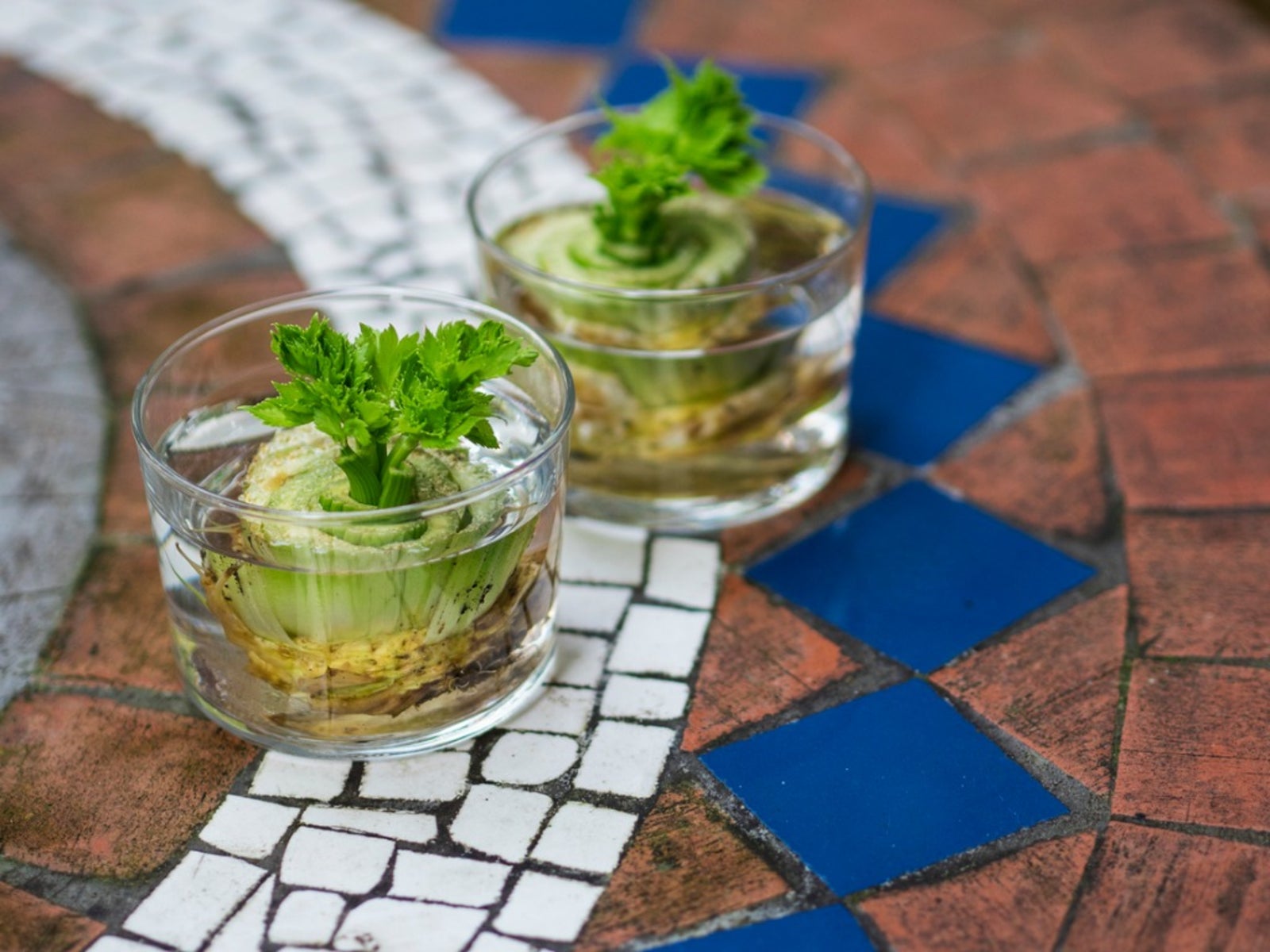Regrowing Celery: How To Plant Celery Bottoms In The Garden

When you use celery, you use the stalks and then discard the base, right? While the compost pile is a good place for those unusable bottoms, an even better idea is planting the celery bottoms. Yes indeed, regrowing celery from the previously useless base is a fun, economical way to reduce, reuse and recycle what used to be waste. Keep reading to find out how to plant celery bottoms.
How to Plant Celery Bottoms
Most plants grow from seeds, but some grow tubers, stem cuttings, or bulbs. In the case of celery, the plant will actually regenerate from the base and regrow new stalks. This process is called vegetative propagation and it doesn’t only apply to rooting celery from the base. Although the process is a little different, beets, romaine, sweet potatoes, and even herbs like garlic, mint, and basil can all be vegetatively propagated.
A cool weather crop, celery (Apium graveolens) often fails to thrive in the hotter zones of USDA 8 through 10. No worries though; you can begin growing celery bottoms indoors on your windowsill until late in summer when they can be moved outdoors for a fall harvest. At that time, you can harvest only the stalks or pull the entire plant up, use the stalks and then replant the base again.
To begin regrowing celery, cut the bottom root from the stalks, about 2 to 3 inches (5-8 cm.). Put the base in a jar and fill it up partway with water. Put the jar in a window that gets good light. Soon, you will see small roots and the beginnings of green leafy stalks. At this point, it is time to get it in the garden or into a pot with some soil.
If you're using a pot for planting the celery bottoms, fill it to an inch (2.5 cm.) from the top with potting soil, make a hollow in the center and push the celery bottom down into the soil. Pack additional soil around the base of the root and water until it is damp. Put it in an area with at least six hours of sun per day and keep it moist. You can continue to grow the celery in the pot until the weather cooperates and then move it into the garden.
If you are going to move the rooting celery from the base directly into the garden, work some compost into the soil prior to planting. Choose a cool area of the garden if you are in a warmer region. Celery likes it cool with very fertile and wet soil. Set the celery 6 to 10 inches (15-25 cm.) apart in rows that are spaced 12 inches (31 cm.) apart. Pat the soil up gently around the bases and water in well. Keep the soil consistently moist, but not soggy, throughout its growing season. Side dress the rows with additional compost and work it gently into the soil.
You can begin to harvest your celery when you see stalks that are about 3 inches (8 cm.) long appearing appear from the center of the root. Cutting them actually encourages new growth. Keep harvesting just stalks or allow the stalks to mature and then pull the entire plant. Cut the stalks from the root base and start all over again for a continuous supply of crunchy, delicious celery.
Gardening tips, videos, info and more delivered right to your inbox!
Sign up for the Gardening Know How newsletter today and receive a free copy of our e-book "How to Grow Delicious Tomatoes".

Amy Grant has been gardening for 30 years and writing for 15. A professional chef and caterer, Amy's area of expertise is culinary gardening.
-
 Looking For Plants To Give You The Soft And Fuzzies? Try These 5 Fuzzy Leaf Plant Options
Looking For Plants To Give You The Soft And Fuzzies? Try These 5 Fuzzy Leaf Plant OptionsLovers of texture, drama, silver foliage and tactile plants will adore these special sensory garden additions. These fuzzy leaf plant options will leave you all aglow
By Susan Albert
-
 Get Ready For A Summer Of Hummers! Grow These Full Sun Hummingbird Plants and Flowers
Get Ready For A Summer Of Hummers! Grow These Full Sun Hummingbird Plants and FlowersIf you’re lucky enough to enjoy a sunny backyard, make sure you are maxing out on your pollinator opportunities and grow these full sun hummingbird plants and flowers
By Tonya Barnett